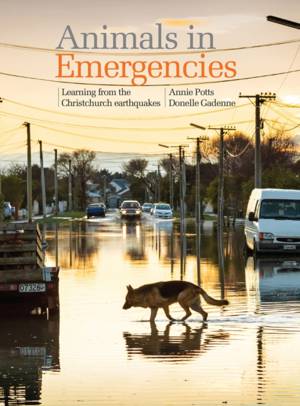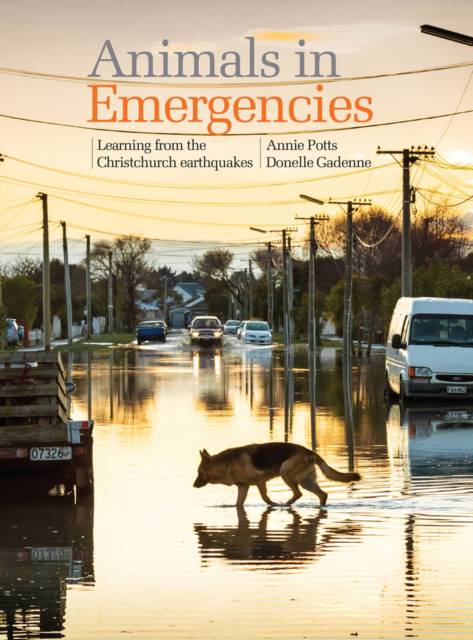
- Afhalen na 1 uur in een winkel met voorraad
- Gratis thuislevering in België vanaf € 30
- Ruim aanbod met 7 miljoen producten
- Afhalen na 1 uur in een winkel met voorraad
- Gratis thuislevering in België vanaf € 30
- Ruim aanbod met 7 miljoen producten
Zoeken
Animals in Emergencies
Learning from the Christchurch Earthquakes
Annie Potts, Donelle Gadenne
Paperback | Engels
€ 46,45
+ 92 punten
Omschrijving
After the 7.1 magnitude earthquake that shook Canterbury, New Zealand on September 4, 2010, the news media were quick to report, with understandable relief, that no lives had been lost. In fact, this first quake killed at least 3,000 chickens, eight cows, one dog, a lemur, and 150 aquarium fish, and that was only the first of a series of even more catastrophic quakes that were to follow, in which many humans and animals perished. Animals in Emergencies: Learning from the Christchurch Earthquakes provides a record of what happened to the animals during and after these quakes, and asks what we can learn from these events and our response to them. The accounts of professionals and volunteers involved in the rescue, shelter, and advocacy of the city's animals postquakes are presented in the first part of the book and are followed by the tales of individual animals. These accounts provide an honest and compelling historical record of how Christchurch's seismic activity affected human-animal relationships in both positive and negative ways.
Specificaties
Betrokkenen
- Auteur(s):
- Uitgeverij:
Inhoud
- Aantal bladzijden:
- 256
- Taal:
- Engels
Eigenschappen
- Productcode (EAN):
- 9781927145500
- Verschijningsdatum:
- 11/05/2015
- Uitvoering:
- Paperback
- Formaat:
- Trade paperback (VS)
- Afmetingen:
- 165 mm x 234 mm
- Gewicht:
- 680 g

Alleen bij Standaard Boekhandel
+ 92 punten op je klantenkaart van Standaard Boekhandel
Beoordelingen
We publiceren alleen reviews die voldoen aan de voorwaarden voor reviews. Bekijk onze voorwaarden voor reviews.











